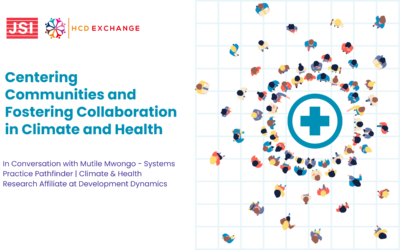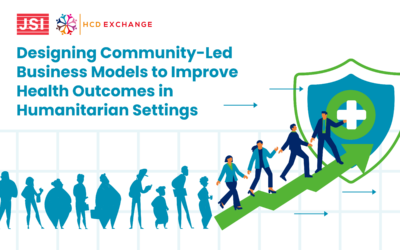What stood out to me was the common sentiment among many attendees – the uncertainty of where to begin when it comes to getting involved and seizing the opportunities available to young people. Is the role that young people play in youth-focused initiatives clear? Young people are still trying to find their footing and may not be in the know of the steps they need to take to step up as equal partners in youth-centered initiatives and grow in their career journeys. For example, an emerging concern was that a large number of youth do not know how to grow beyond being just youth representatives whose role is to offer youth perspectives in events and conferences on an ad hoc basis. As such, the influencers for youth-focused programs play a major role in setting the tone for meaningful youth involvement by actively bringing young people into programs right from the early stages and ensuring that hands-on mentorship is offered to help youth understand how to navigate the advocacy space.
Sentiments on youth involvement resonated with a chorus of shared experiences on the tokenism culture subtly practiced by some youth-led initiatives. An example that stuck with me is the story of an attendee who was hired for her ‘youth’ status. She was informed that she will be the face of a local community-based organization (CBO) that was seeking to solve the risks associated with transactional sexual relationships among school-going teenagers. She recounted how after the CBO took off and attracted funding, her role was reduced to her name appearing in grant proposals while she was completely sidelined in the implementation stage. Others, like the young person in this example, struggled to understand why it is easy to represent an initiative as youth-focused yet the benefits to the youth themselves fail to trickle down. This points towards a disconnect on how youth engagement and involvement is practiced. Although events like this offer the youth an opportunity to feel heard and seen, we have to ask, ‘how can the impact be sustained even after the curtains close’?
Youth engagement is not a one-time event but a continuous journey. It’s about empowering young people to recognize their potential and providing them with tools to unlock it. By investing in resources, extending opportunities for hands-on activities, offering skills-building opportunities, and establishing mentorship programs, the next generation of change-makers can step onto the plate when their time comes. We therefore need to be intentional when organizing youth-focused events to ensure that the value shared continues post the event.
These are some of the ways I would like to see value maximized during youth-focused events:
- Resource packages
Complementary bags, pens, notebooks and water bottle swag is a nice-to-have for sentimental memories. However, for a youth-focused event, it would be nice to have a package of reading resources. These can include brochures offering in-depth information on the themes covered during the event, snapshots on how to ensure you are involved meaningfully in youth-led initiatives, one-pagers on youth engagement in practice, and a starter-friendly booklet that contains all the necessary information that guides a young person on the next steps. These would be helpful points of reference to continue engagement post the event.
2. Mentorship channels
Organizers should aim to offer attendees mentorship opportunities as mentorship is a catalyst for change. Peer-to-peer learning exchanges are a great way for young people to learn from one another. Compared to when capacity-building initiatives emanate from seasoned champions, a young person may find another youth’s lived experience more relatable. Thus, these events present a great opportunity to initiate a mentorship system among young people. This can be as simple as implementing an online community platform, either web-based or on social channels like WhatsApp, Slack or Telegram.
3. Skill-enhancing activities
Creative challenges and hackathons provide an opportunity to showcase and practice skills necessary for thriving in the workplace. For example, in the run-up to the HCDExchange Youth Day 2020 convening, we asked youth online to submit creative materials such as videos, photography, memes, and artwork that dealt with sexual health topics. The central question participants were addressing was, “How might we address the sexual health needs of youth globally?” We received a number of thoughtful submissions, several of which won implementation sub-grants. We noted this to be a practical way to enable young people to practice and showcase their innate skills and originality of ideas.
Youth engagement is a powerful practice that requires more than surface-level involvement. It demands us to have an intentional commitment to create sustainable strategies for youth involvement that equips them to be self-driven change-makers in youth-focused initiatives.
This thought-piece has been written by Belindar Kwamboka, the Communications and Social Media Associate at HCDExchange




